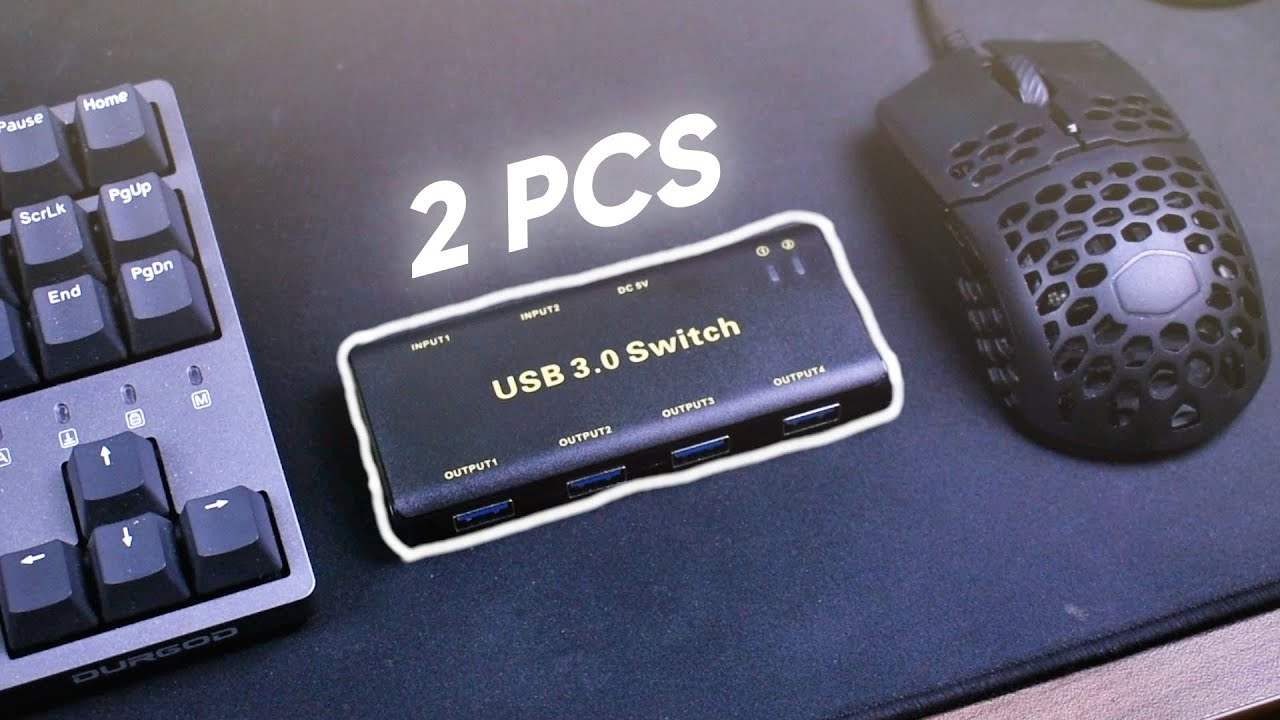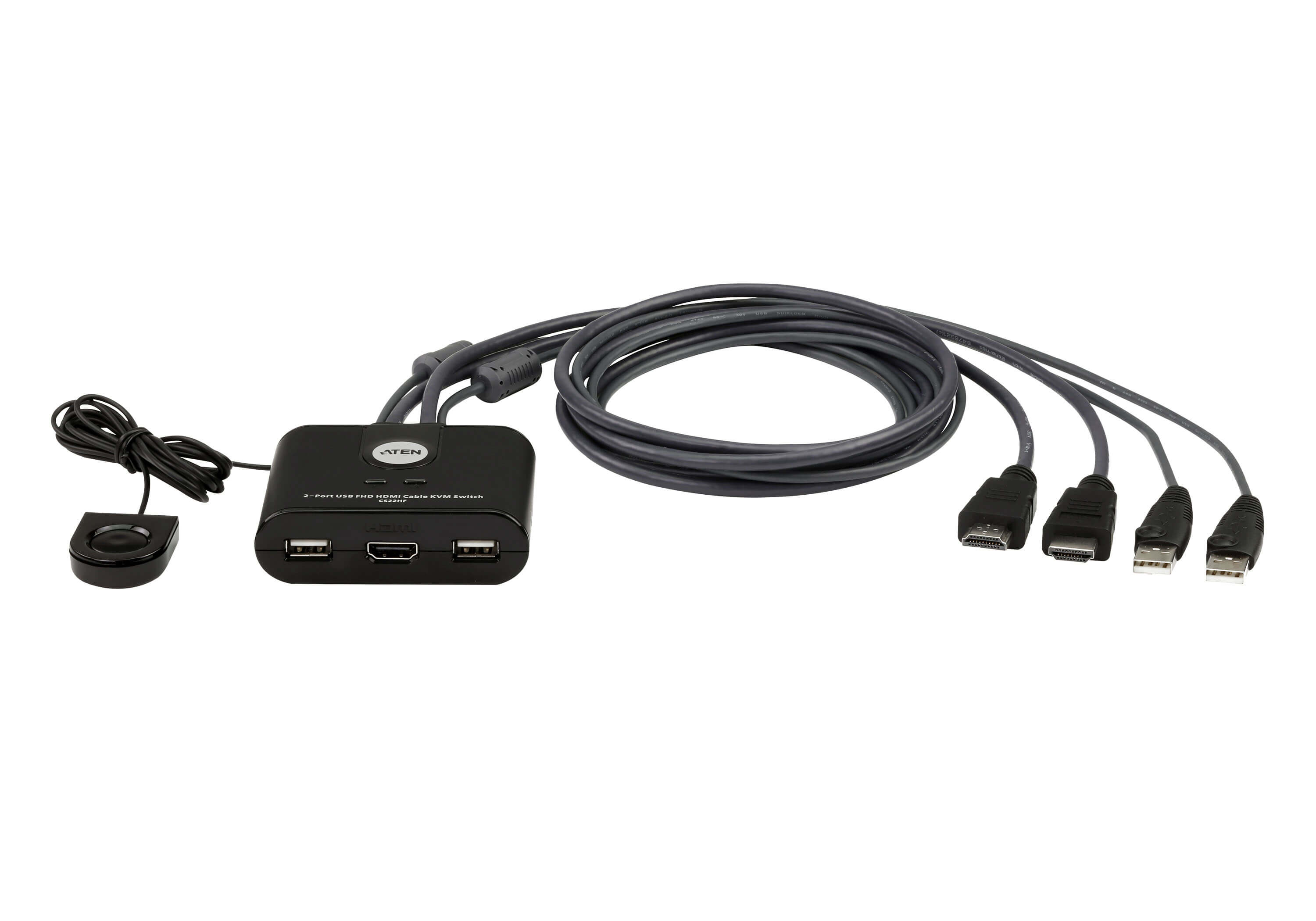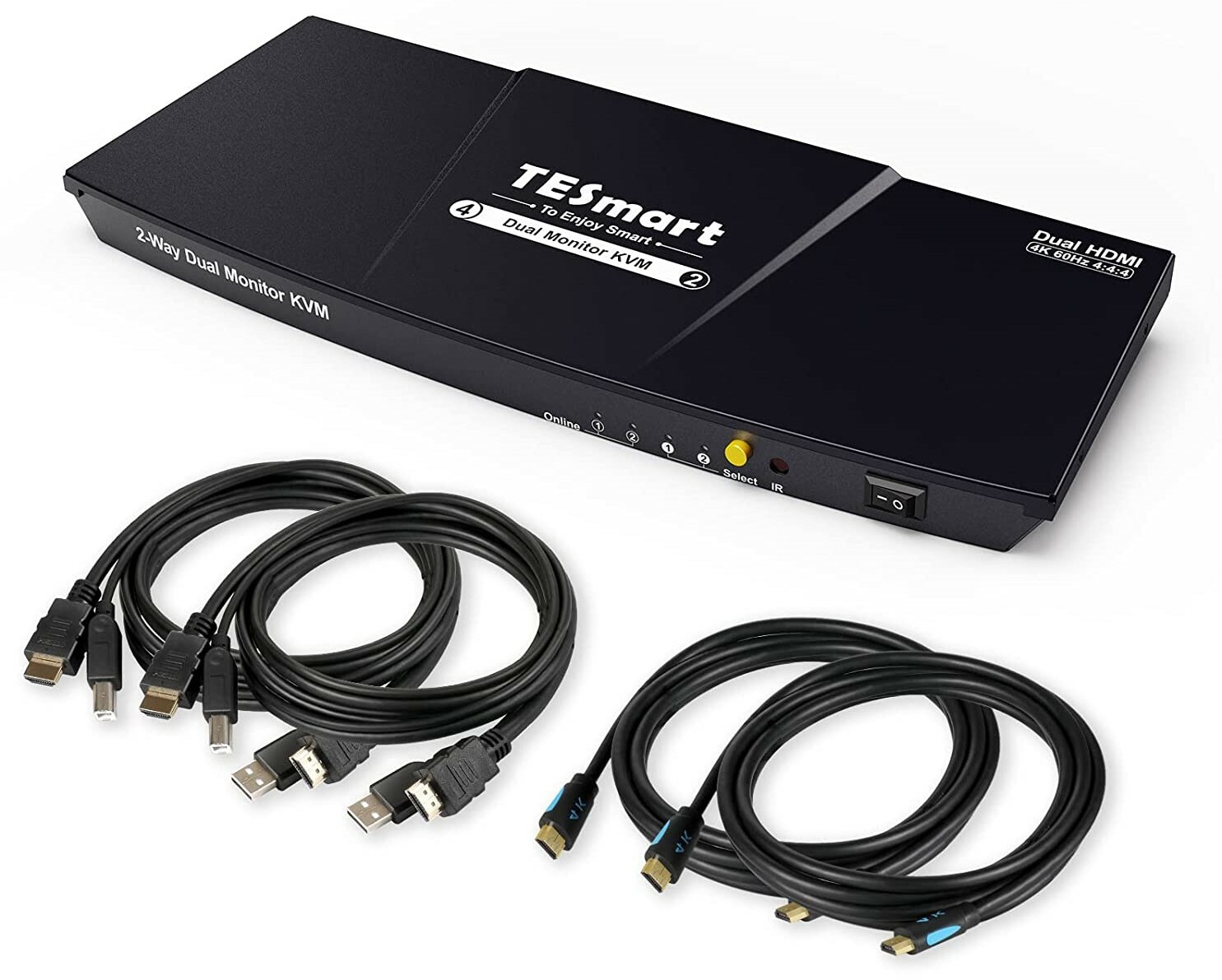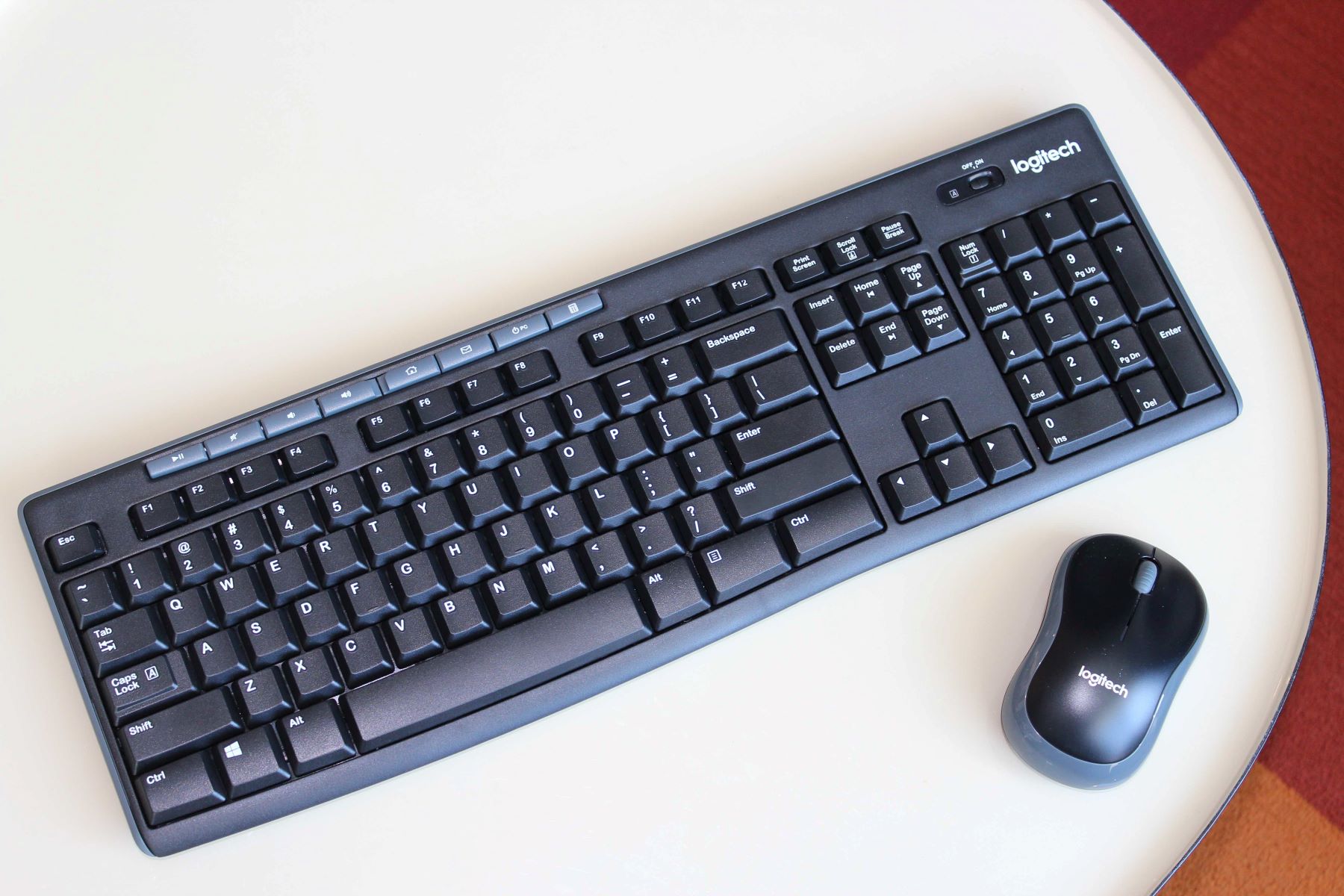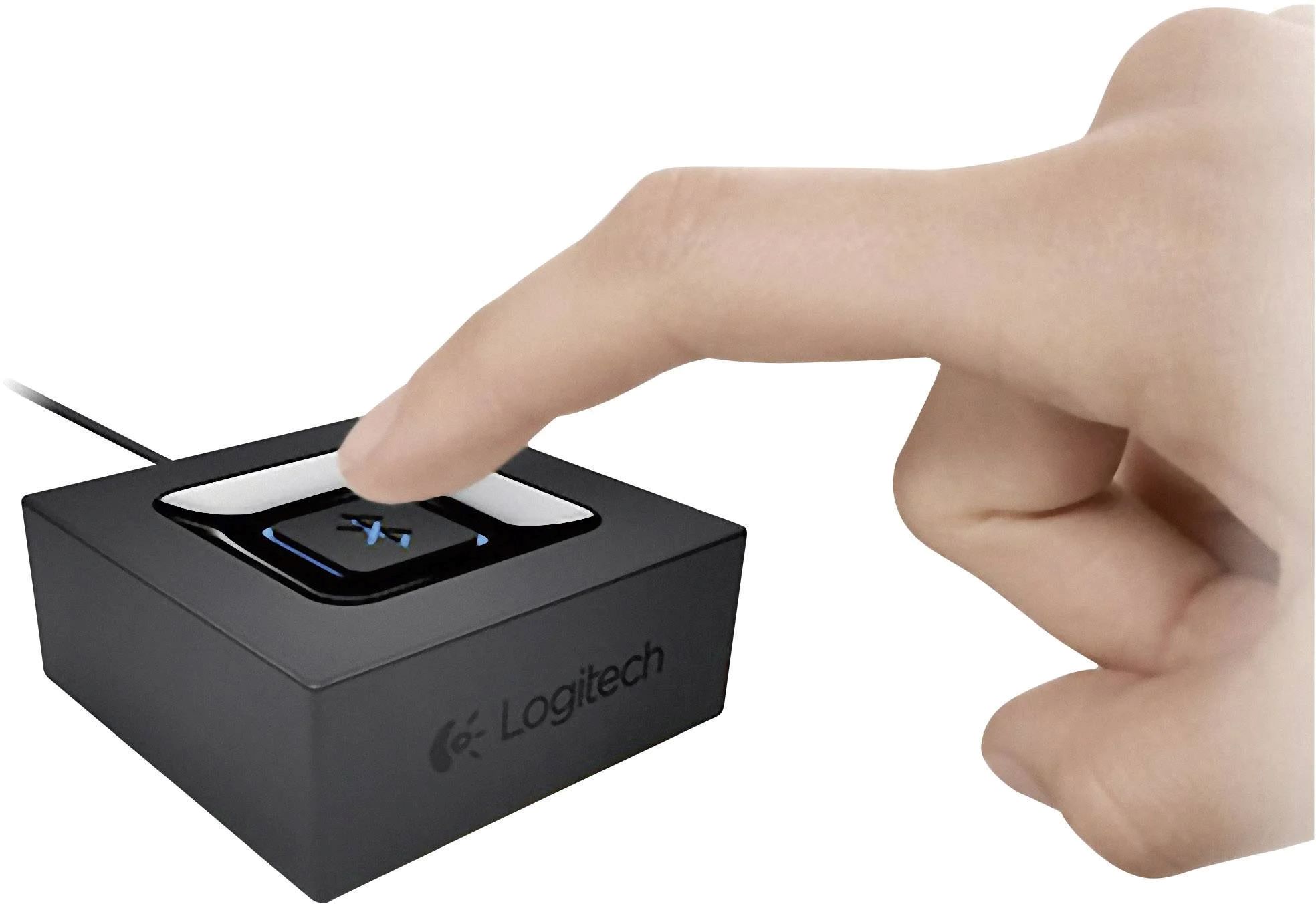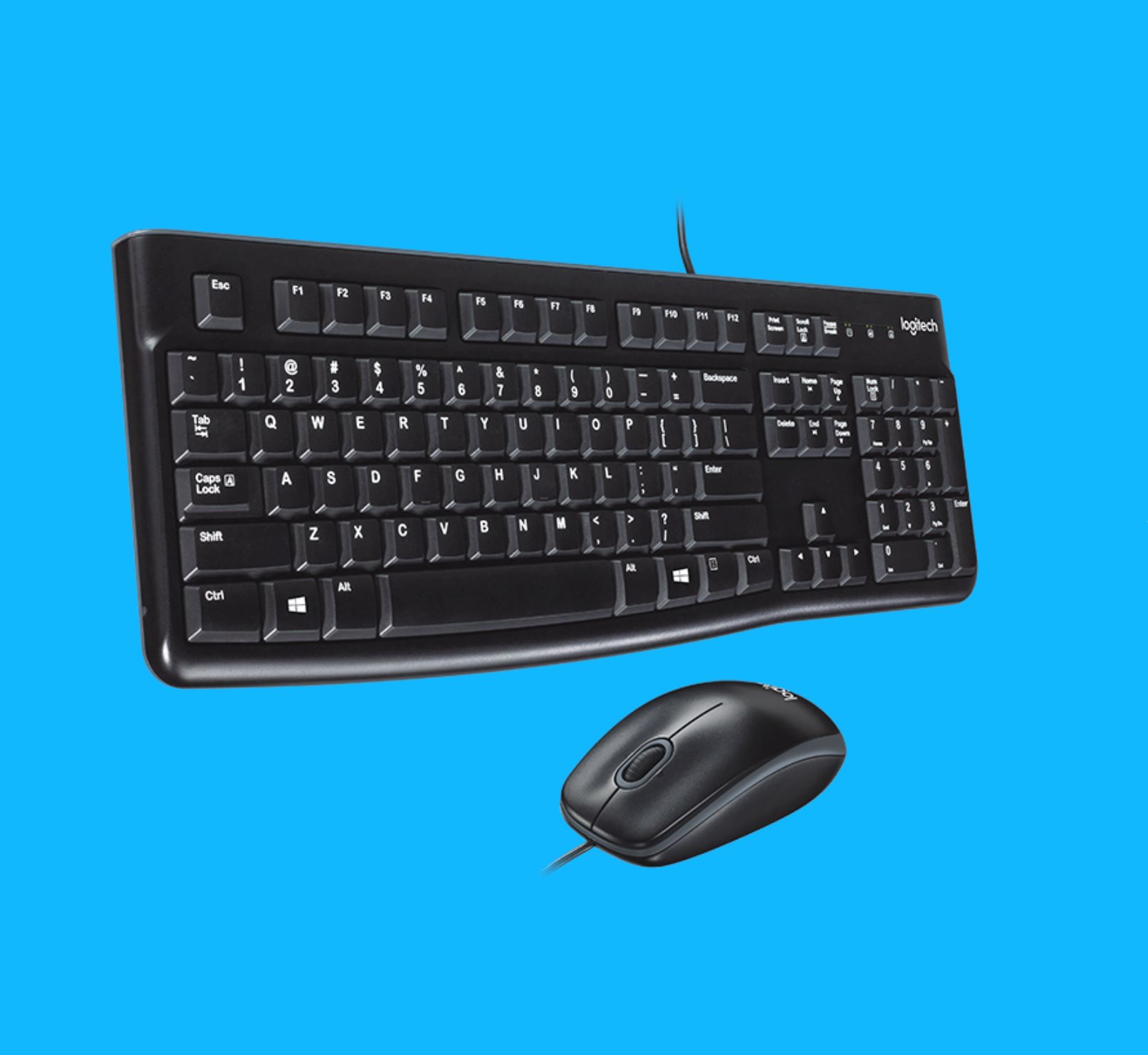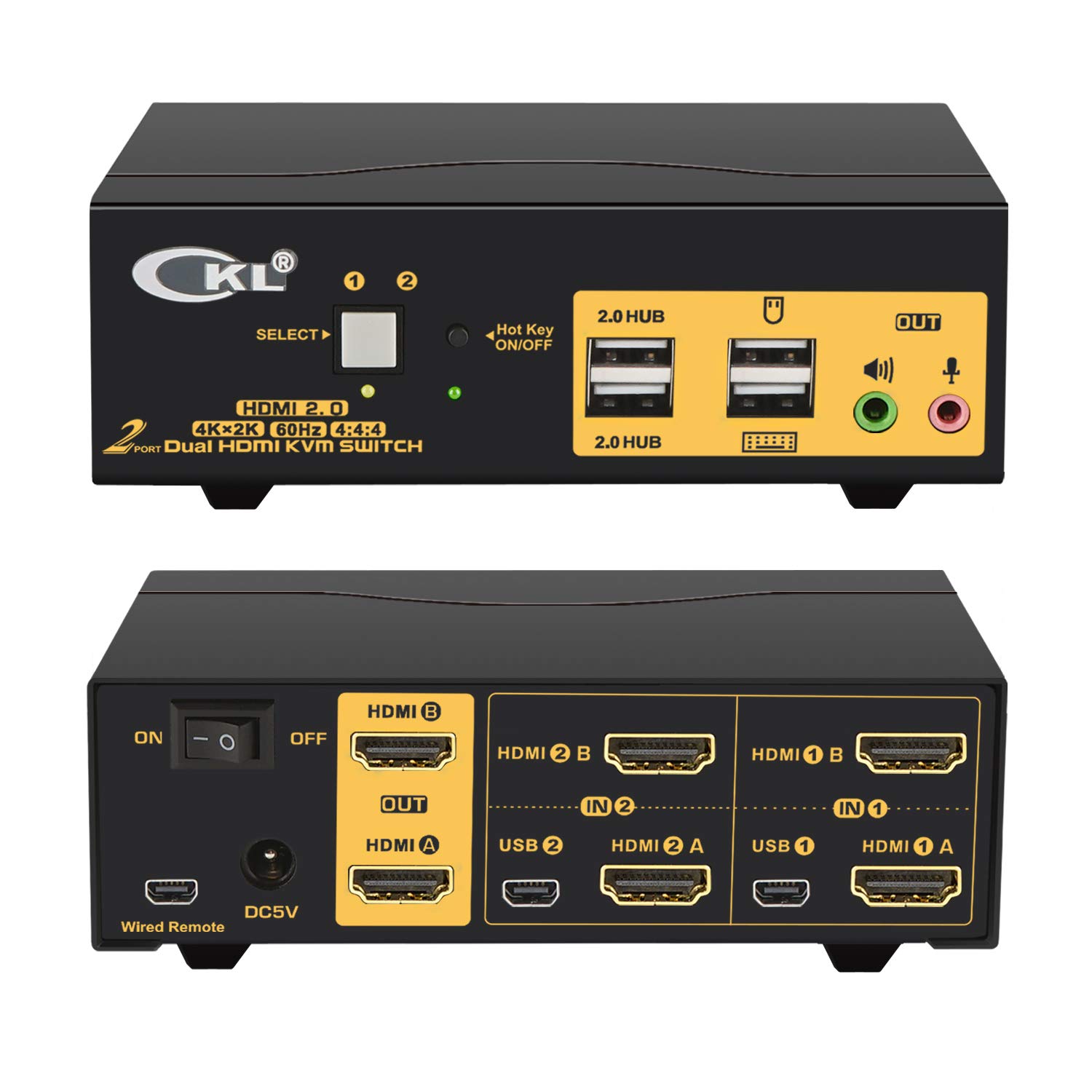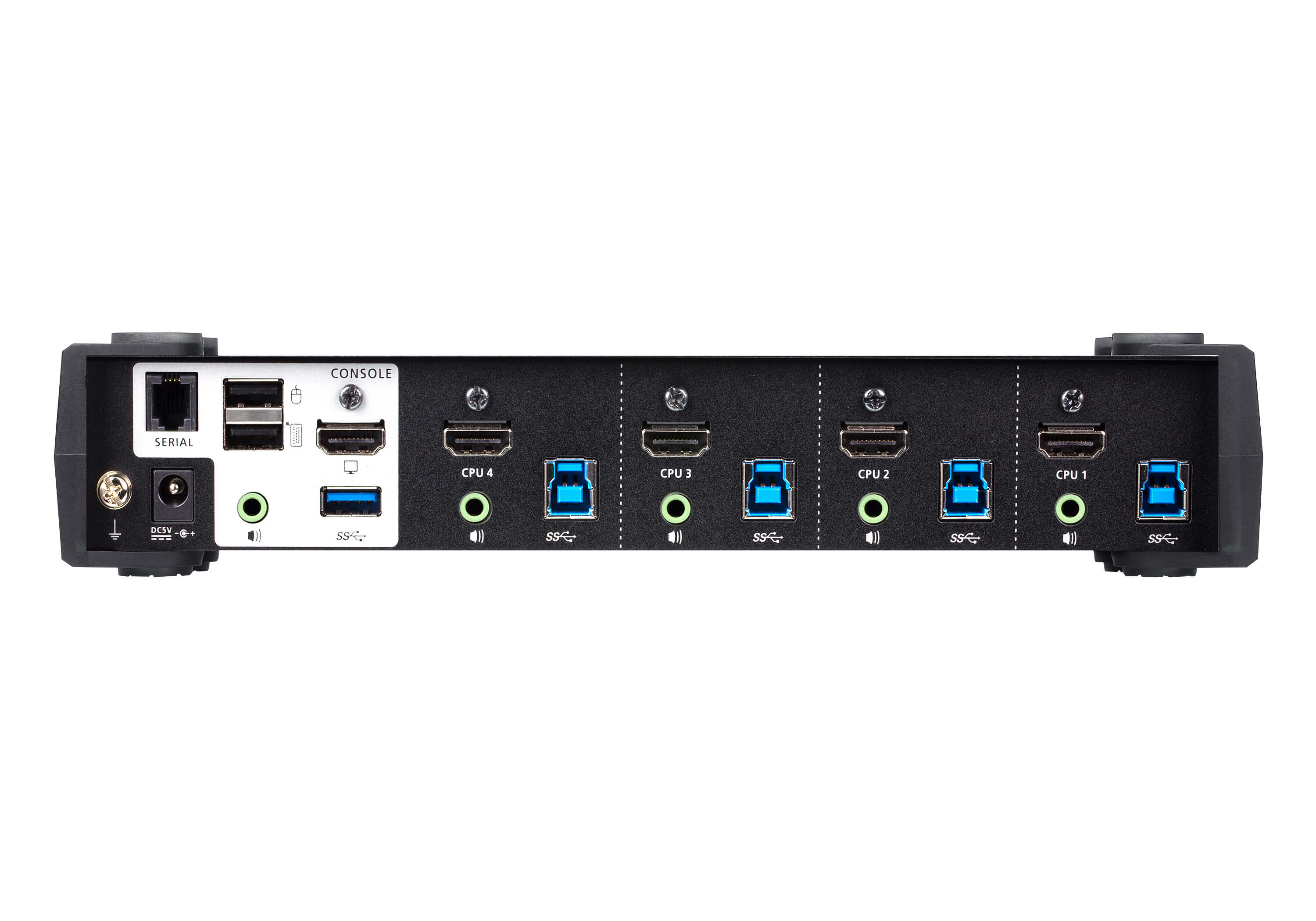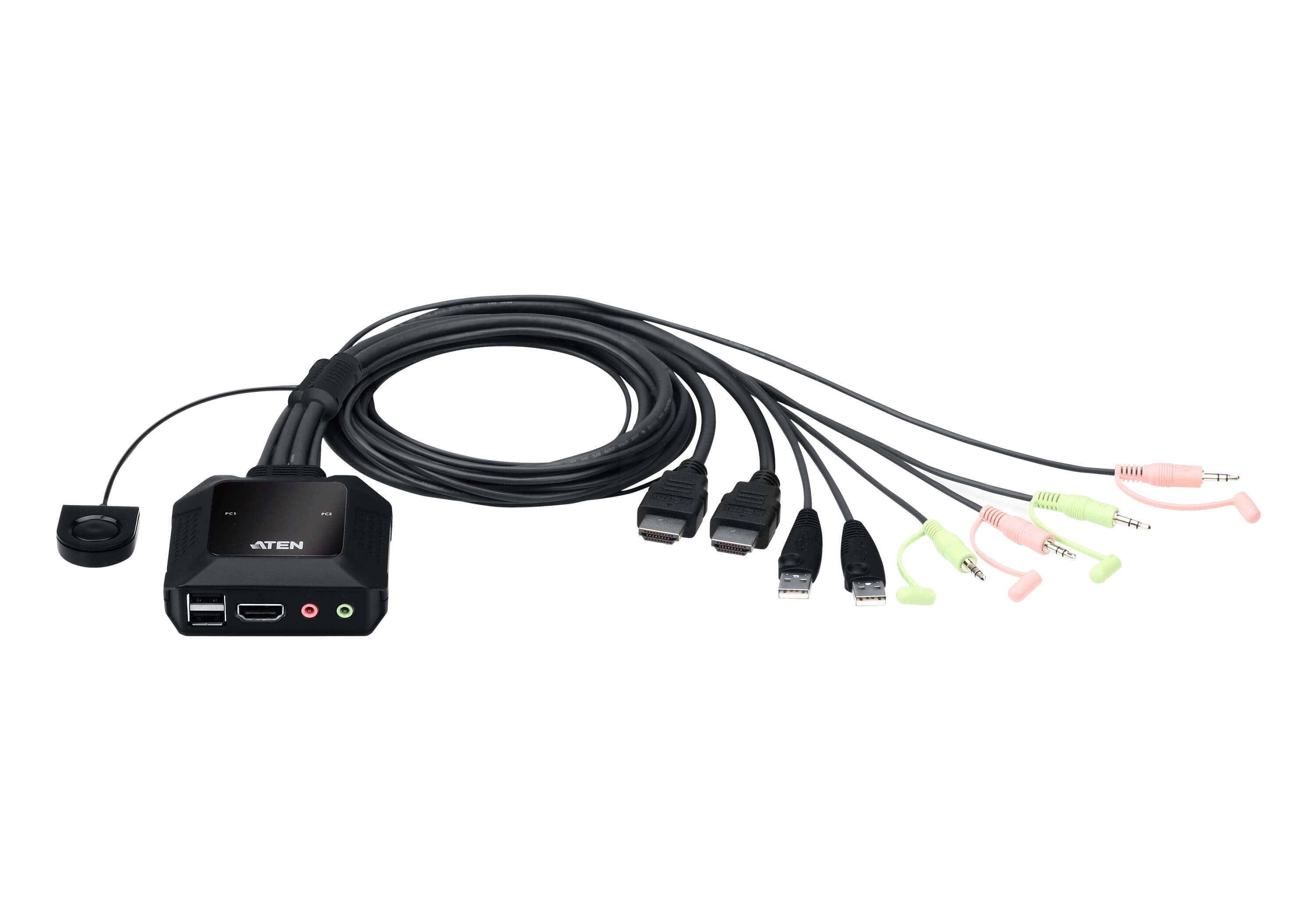Introduction
Using one keyboard and mouse for two computers can be a game-changer for those who work with multiple devices. Whether you’re a professional who needs to switch between a desktop and a laptop, a gamer with multiple consoles, or simply someone who wants to declutter their workspace, this efficient setup can save you time, effort, and frustration.
Traditionally, managing multiple computers would require separate keyboards and mice, causing desk clutter and confusion. However, with the help of a few innovative solutions, you can seamlessly control multiple devices using a single set of peripherals. In this article, we’ll explore the different methods available for using one keyboard and mouse for two computers and discuss the benefits they offer.
By implementing this setup, not only can you reduce the number of devices on your desk, but you can also enjoy a more streamlined workflow. Imagine seamlessly switching between devices with just a few clicks or keystrokes, eliminating the need to constantly switch peripherals or reach for a different keyboard and mouse.
From a productivity perspective, using one keyboard and mouse for multiple devices can also be a time-saver. You no longer need to remember different shortcuts, mouse movements, or trackpad gestures for each device. Instead, you can rely on muscle memory and effortlessly navigate between screens, boosting your efficiency and reducing the learning curve associated with different input devices.
Furthermore, this setup promotes a clutter-free workspace, allowing you to focus on the task at hand. With fewer cables and devices, you can create a more organized and visually appealing environment. This sense of order can have a positive impact on your mindset, fostering creativity and concentration.
In the following sections, we will delve into the various methods for using one keyboard and mouse for two computers, examining the hardware and software options available. Whether you choose to utilize a hardware KVM switch, software programs, or remote desktop tools, we’ll provide detailed instructions and guidance to help you set up and optimize your workspace.
So, let’s explore the benefits and requirements of using a single set of peripherals for multiple computers and discover the methods to achieve this convenience and efficiency.
Benefits of Using One Keyboard and Mouse for Two Computers
Using one keyboard and mouse to control multiple computers offers numerous advantages that enhance productivity, organization, and convenience. Here are some key benefits of implementing this setup:
- Streamlined Workflow: With one keyboard and mouse, seamlessly switch between multiple computers without the need to physically change peripherals. This saves time and eliminates disruptions, allowing you to focus on your tasks.
- Space-saving: Reduce clutter on your desk by eliminating the need for multiple keyboards and mice. Having a cleaner workspace can help you stay organized and create a more visually appealing environment.
- Consistent User Experience: By using the same keyboard and mouse for all your devices, you maintain a consistent user experience across platforms. This eliminates the need to adjust to different input devices and improves muscle memory, leading to increased efficiency.
- Simplified Input: Remembering separate keyboard shortcuts, trackpad gestures, or mouse configurations for each device can be challenging. By using one keyboard and mouse, you only need to learn and memorize one set of shortcuts, resulting in a simplified input experience.
- Multi-tasking Made Easy: Seamlessly switch between different computers with just a few clicks or keystrokes. This enables you to multitask more efficiently and eliminates the need to physically move between devices.
- Cost-effective: Avoid the need to purchase additional keyboards and mice for each computer. Using one set of peripherals for multiple devices can save you money in the long run.
- Increased Productivity: With a streamlined workflow, consistent user experience, and simplified input, you can work more efficiently and complete tasks faster. This can ultimately lead to increased productivity.
- Flexibility: Whether you’re a professional, gamer, or student, using one keyboard and mouse allows you to easily switch between devices based on your needs. This flexibility accommodates different use cases and ensures a smooth transition between different tasks or applications.
- Ease of Collaboration: If you are collaborating with colleagues or friends, having a shared keyboard and mouse setup can make it easier to work on projects together. You can quickly hand off control to another person without needing to physically switch devices.
- Enhanced Ergonomics: Using a single set of peripherals promotes good ergonomics by allowing you to maintain a consistent typing and mousing position. This can help reduce the risk of repetitive strain injuries and improve overall comfort during long hours of work.
By leveraging the benefits mentioned above, you can optimize your productivity, create a more organized workspace, and seamlessly switch between multiple computers. The following sections will detail the requirements and methods for implementing this setup, helping you choose the most suitable approach for your needs.
Requirements for Using One Keyboard and Mouse for Two Computers
To achieve the convenience of using one keyboard and mouse for two computers, you’ll need to ensure that you have the necessary hardware or software components. Here are the requirements for implementing this setup:
- Two Computers: You must have two separate computers that you want to control using a single keyboard and mouse. These can be desktops, laptops, or a combination of both.
- Operating Systems: Both computers should be running compatible operating systems. The specific requirements will vary depending on the method you choose to implement, but typically, most popular operating systems such as Windows, macOS, and Linux are supported.
- Hardware Method: If you opt for a hardware-based solution, such as a KVM switch, you will need to purchase the appropriate hardware device. The KVM switch should have the necessary ports to connect your keyboard, mouse, and computers.
- Peripheral Compatibility: Ensure that your keyboard and mouse are compatible with the hardware or software solution you plan to use. Most standard USB or wireless keyboards and mice will work with commonly available solutions.
- Hardware Connectivity: For hardware-based solutions, you need the necessary cables to connect your keyboard, mouse, and computers to the KVM switch. Make sure you have the correct cables and consider the length required to reach your desired setup.
- Software Method: If you choose a software-based solution, you will need to install the appropriate software program on both computers. Check the system requirements and ensure compatibility with your operating system.
- Network Connectivity: For methods that involve remote desktop tools or software-based solutions, both computers should be connected to the same network. This can be achieved through wired or wireless connections.
- Internet Connection (if applicable): Some remote desktop tools may require an internet connection for setup or certain features. Ensure that both computers have a stable internet connection if you plan to use these methods.
- Basic Computer Knowledge: While not a strict requirement, having basic computer knowledge will be beneficial when setting up and troubleshooting any issues that may arise during the process. Familiarize yourself with the operating system and understand how to connect and configure peripherals.
By meeting these requirements, you can proceed with the chosen method to use one keyboard and mouse for two computers. Now that we’ve covered the necessary elements, let’s dive into the different methods you can utilize to achieve this setup.
Method 1: Using a Hardware KVM Switch
One popular and straightforward method to use one keyboard and mouse for two computers is by using a hardware device called a KVM switch (Keyboard, Video, Mouse switch). A KVM switch allows you to connect multiple computers to a single keyboard, mouse, and monitor, enabling you to control them seamlessly. Here’s how it works:
- Choose the Right KVM Switch: Select a KVM switch that suits your needs. Consider the number of computers you want to connect, the type of connectors your devices use (USB, PS/2, HDMI, VGA, etc.), and any additional features you might want, such as audio or USB hub integration.
- Connect the KVM Switch: Connect your keyboard, mouse, and monitors to the appropriate ports on the KVM switch. Then, connect each of your computers to the corresponding ports on the KVM switch using the provided cables. Ensure that all connections are secure.
- Switch Between Computers: Once the KVM switch and computers are connected, you can start switching between them using the designated switch mechanism. This can be a physical button on the KVM switch, a keyboard shortcut, or a software interface provided by the KVM switch.
- Follow Manufacturer Instructions: Each KVM switch may have its own specific setup instructions and switch mechanisms. Consult the manufacturer’s manual or documentation for detailed guidance on how to use and configure the KVM switch according to your requirements.
- Additional Considerations: Some advanced KVM switches support features like hotkey switching, which allows you to switch between computers by pressing specific keyboard combinations. Additionally, some KVM switches support USB hub integration, enabling you to share USB devices among your connected computers.
Using a hardware KVM switch is a reliable and straightforward method to control multiple computers with one keyboard and mouse. It offers a physical and tangible switching mechanism, allowing you to instantly transition between devices without any software installations or configuration. However, it’s essential to choose a high-quality KVM switch that meets your specific requirements and offers sufficient compatibility with your devices.
Keep in mind that the availability of video switching and resolution support may vary depending on the KVM switch model. Ensure that the KVM switch you select supports the video resolution and quality you desire for your connected computers.
Now that you understand the process of using a hardware KVM switch, you can explore the next methods available to utilize one keyboard and mouse for multiple computers.
Method 2: Using Software Programs
If you don’t want to invest in additional hardware, another method to use one keyboard and mouse for two computers is by utilizing software programs. These programs allow you to control multiple computers remotely and share the input devices seamlessly. Here’s how you can achieve this:
- Research Software Solutions: Look for software programs specifically designed for controlling multiple computers with one keyboard and mouse. There are various options available, both free and paid, catering to different operating systems and specific needs.
- Choose a Suitable Software Program: Evaluate the features, compatibility, and user reviews of different software solutions. Consider factors such as ease of use, stability, security, and any additional functionalities that might be important to you.
- Install the Software: Download and install the software program on both computers that you want to control. Follow the instructions provided by the software vendor for a successful installation. It is essential to install the software on all computers involved in the setup.
- Configure Software Settings: After installation, configure the software program according to your preferences. This may involve specifying which computer will be the host (the one that shares the keyboard and mouse) and which computer(s) will be the client(s) (the ones that receive control).
- Establish Connection: Connect the computers through the software program by following the instructions provided. Typically, this involves entering the IP address or hostname of the host computer into the client computer(s) to establish the connection.
- Control the Computers: Once the connection is established, you can control the client computers using the keyboard and mouse connected to the host computer.
- Switch Between Computers: Most software programs provide a convenient method to switch between the client computers. This can be done through a hotkey combination or by using the software’s interface to select the desired computer for control. Familiarize yourself with the switch mechanism to navigate between the connected computers effortlessly.
- Software-specific Features: Depending on the software program you choose, you may have access to additional features such as file sharing, clipboard syncing, screen sharing, and more. Explore and utilize these features to further enhance your productivity and ease of use.
Using software programs to control multiple computers with one keyboard and mouse provides flexibility and eliminates the need for additional hardware. However, it’s crucial to choose a reliable software solution that offers the required functionality and maintains a stable connection between the computers.
Also, keep in mind that software-based solutions may introduce some latency, depending on the network conditions and the performance of the connected computers. Ensure that your network connection is stable and that the computers meet the minimum system requirements for running the software program effectively.
Now that you understand the process of using software programs, you can explore the next method for using one keyboard and mouse across multiple computers.
Method 3: Using Remote Desktop Tools
Another method to control multiple computers with one keyboard and mouse is by utilizing remote desktop tools. These tools allow you to access and control one computer from another, enabling you to use your keyboard and mouse on a remote computer. Here’s how you can implement this method:
- Choose a Remote Desktop Tool: Research and select a reliable remote desktop tool that supports keyboard and mouse sharing. There are various options available, such as Microsoft Remote Desktop, Chrome Remote Desktop, TeamViewer, and more.
- Install the Remote Desktop Tool: Install the chosen remote desktop tool on both the host computer (the computer you want to control) and the client computer (the computer you want to use your keyboard and mouse on). Follow the instructions provided by the remote desktop tool vendor for successful installation.
- Configure the Remote Desktop Tool on the Host Computer: On the host computer, configure the remote desktop tool to allow incoming connections. This typically involves enabling remote access and setting up security measures, such as passwords or access codes.
- Connect to the Host Computer: On the client computer, open the remote desktop tool and establish a connection to the host computer. Enter the necessary information, such as the host computer’s IP address or hostname, and provide any required credentials.
- Control the Host Computer: Once the connection is established, you can control the host computer from your client computer using your keyboard and mouse. The remote desktop tool will display the host computer’s screen on your client computer, allowing you to interact with it as if you were physically present.
- Switch Between Computers: Most remote desktop tools provide a convenient way to switch between multiple connected computers. This can usually be done through a tabbed interface or a list of connected computers within the remote desktop tool.
- Advanced Features: Remote desktop tools often offer additional features, such as file transfer, clipboard sharing, screen recording, and more. Explore and utilize these features to enhance your remote control experience.
- Internet Connection: Ensure that both the host and client computers have a stable internet connection for seamless remote control. For optimal performance, a high-speed and low-latency connection is recommended.
Using remote desktop tools to control multiple computers with one keyboard and mouse provides the convenience of remote access, allowing you to control a computer from anywhere in the world. However, it’s important to ensure that the remote desktop tool you choose is secure and that you follow best practices for remote access, such as using strong passwords and encrypting the connection.
Remember to consider the performance of the host computer as well, as it will be responsible for processing and transmitting the remote desktop’s display and input. Make sure the host computer meets the system requirements of the remote desktop tool and has sufficient resources to handle the remote control session.
Now that you have a good understanding of using remote desktop tools, you can move on to the troubleshooting section to address common issues that may arise during the setup process.
Troubleshooting Common Issues
While setting up one keyboard and mouse for multiple computers can greatly improve your workflow, you may encounter some common issues along the way. Understanding and troubleshooting these issues can help ensure a smooth and seamless experience. Here are some common problems you may encounter and how to troubleshoot them:
- Connection Issues: If you’re experiencing difficulty connecting your keyboard and mouse to the computers or the KVM switch, check the cables and connections. Make sure all cables are securely plugged in and that the ports are not damaged. If using a software-based solution, ensure that both computers are on the same network and that the software is correctly installed and configured.
- Compatibility Problems: If your keyboard or mouse is not working properly, ensure that they are compatible with the hardware or software solution you’re using. Some older keyboards or mice may have limited compatibility. Try using different peripherals or updating the drivers for the peripherals you have.
- Performance Issues: If you’re experiencing lag or slow response time when using one keyboard and mouse for multiple computers, consider the capabilities of your computers and the network. Make sure your computers meet the system requirements for the chosen solution, and check your network speed and stability. Closing unnecessary applications or programs on both computers can also help improve performance.
- Security Concerns: If you’re using remote desktop tools or software programs that involve remote access, ensure that you have proper security measures in place. Use strong passwords, configure firewalls, enable two-factor authentication if available, and keep your software up to date to protect against potential security threats.
- Software or Driver Issues: If you encounter software crashes, freezing, or unexpected behavior, make sure that you have the latest version of the software installed on both computers. Check for any available updates or patches that may resolve known issues. Additionally, ensure that you have the most up-to-date drivers for your keyboard and mouse.
- Hotkey or Switching Problems: If you’re having trouble switching between computers using hotkeys or switching mechanisms, check the documentation or settings of your chosen solution. Ensure that you’re pressing the correct key combinations and that they’re not conflicting with other applications or system shortcuts. If using a hardware-based solution, try replacing the hotkey switch or reconfigure the switch mechanism.
- Display or Resolution Issues: If you have difficulty with display quality or incorrect resolution on the remote computer’s screen, adjust the display settings on the host or client computer. Ensure that the host computer’s resolution and refresh rate are supported by the remote desktop tool or KVM switch. Adjusting the display settings on the client computer can also help optimize the viewing experience.
- Interference or Signal Loss: If you experience interference or signal loss when using a wireless keyboard or mouse, try moving closer to the receiver or KVM switch. Ensure that there are no physical obstacles or interference sources, such as other wireless devices, between the keyboard or mouse and the receiver.
By troubleshooting these common issues, you can overcome any challenges that may arise when setting up and using one keyboard and mouse for multiple computers. Remember to consult the documentation and support resources provided by the hardware or software vendors for additional guidance specific to your setup.
Now that you’re equipped with troubleshooting know-how, you can implement the method of your choice with confidence and enjoy the benefits of a more streamlined and efficient workspace.
Conclusion
Using one keyboard and mouse for two computers can greatly improve your productivity, organization, and convenience. Whether you opt for a hardware KVM switch, software programs, or remote desktop tools, this setup allows you to seamlessly control multiple devices using a single set of peripherals.
By implementing this setup, you can streamline your workflow, reduce desk clutter, and maintain a consistent user experience across platforms. With the ability to easily switch between computers, you can multitask more efficiently and eliminate the need for multiple keyboards and mice.
The hardware-based solution of a KVM switch provides a tangible and reliable switching mechanism, while software programs and remote desktop tools offer flexibility, convenience, and remote access capabilities. Choosing the method that best fits your needs and environment is key to achieving an optimal one keyboard and mouse setup.
Throughout the setup process, you may encounter common issues such as connection problems, compatibility concerns, performance issues, or software glitches. By troubleshooting these problems and ensuring proper security measures, you can overcome any challenges that may arise and enjoy a smooth experience.
Remember to consider the specific requirements and compatibility of your devices, as well as necessary peripherals and cables. Additionally, stay up to date with the latest software updates and drivers to ensure optimal performance and security.
Whether you’re a professional, gamer, or student, using one keyboard and mouse for multiple computers can enhance your productivity, increase organization, and simplify your workflow. Take advantage of the methods outlined in this article to create a more efficient and enjoyable computing experience.
So, explore the options available, experiment with the different methods, and find the solution that works best for you. With one keyboard and mouse controlling multiple computers, you can declutter your workspace, save time, and optimize your productivity.







